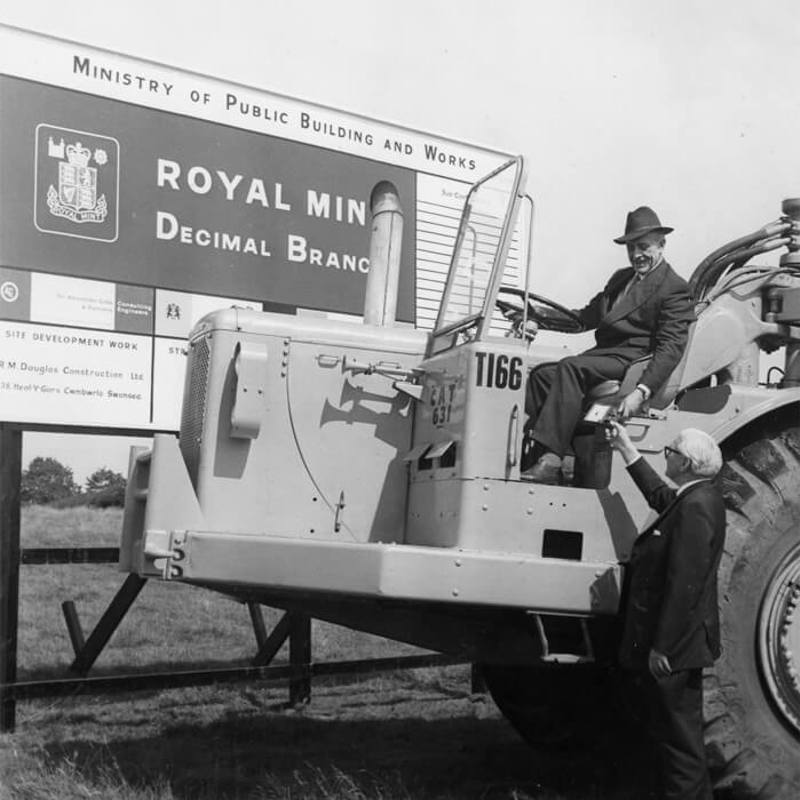Find out more

London to Llantrisant
Discover the fascinating story behind the Royal Mint’s move from London to Wales.
A new Llantrisant workforce had to be trained and equipment installed and tested in order to meet the targets required for D Day in 1971. Despite the pressure, the stockpile of decimal coins was completed well ahead of schedule.
The manufacture of decimal coins in Wales did not start with the opening of the Llantrisant site in December 1968. Over a year earlier training of the Welsh workforce had begun. Plans were already in place to open a training factory in Bridgend but, to avoid delay, two presses were temporarily installed at the Government Training Centre in Cardiff.
A significant figure at the Bridgend factory was Cyril Laws, who had worked at Tower Hill for 30 years before moving to Llantrisant. He and a small number of key staff from London had been among the first to relocate to Wales to teach new employees the skills required to strike coins.
Early production at Bridgend was restricted to United Kingdom 1/2d pieces, but as soon as the factory was fully established a switch was made to decimal coinage. By the time the Queen opened the new decimal branch at Llantrisant in December 1968 the Bridgend staff of just over 200 had, in the process of training, produced over 250 million decimal bronze coins. Workers began moving from Bridgend to Llantrisant at the end of 1968.
‘The new 1/2p is equivalent to 1.2d, the 1p is worth 2.4d and the 2p is equal to 4.8d under our present monetary system’
South Wales Evening Post, 11 June 1968
The first task at Llantrisant was to create a stockpile of the new decimal bronze coins in preparation for decimalisation day in 1971. The automated bulk-handling systems installed in the new coining and annealing buildings at Llantrisant represented a transformation from the old practices in London, where minting had been carried out by several separate semi-automatic operations with manual handling between each.
New technology at Llantrisant allowed these procedures to be performed automatically. Swinging bucket conveyors, continuous elevators, conveyor belts and storage hoppers transported coin blanks into seven-ton hoppers which filtered them directly to the coining presses to be struck with the new decimal designs.
By these means Llantrisant was able by August 1969 to meet its projected target of 50 million decimal bronze coins per week.
A new form of packing was required for the decimal coins to meet the challenge of efficient coin distribution. The coins were automatically wrapped in a transparent film which was heat shrunk to form a tight cylindrical roll. These rouleaux were then transported by conveyor via automatic check-weight machines to packing stations, where they were packed in cardboard cartons each containing £20 worth of coins.
The 12 wrapping machines were the largest single installation of their type in the world. By the end of 1969 they were running reliably and giving an output of more than 45 million coins a week.

Discover the fascinating story behind the Royal Mint’s move from London to Wales.